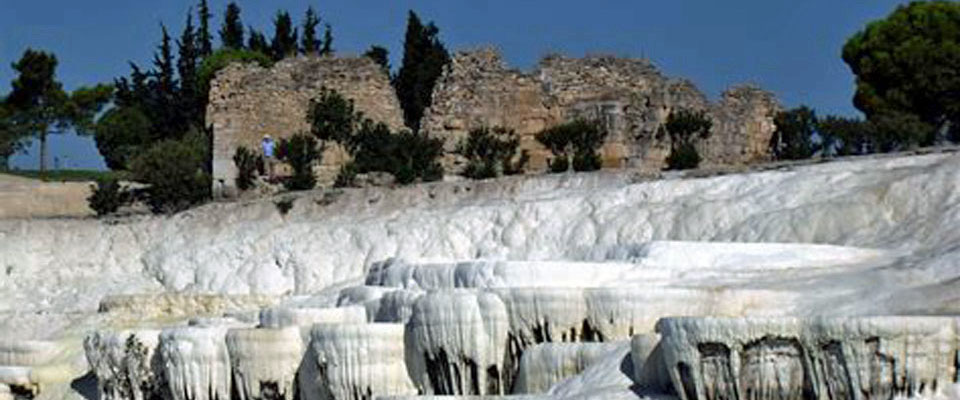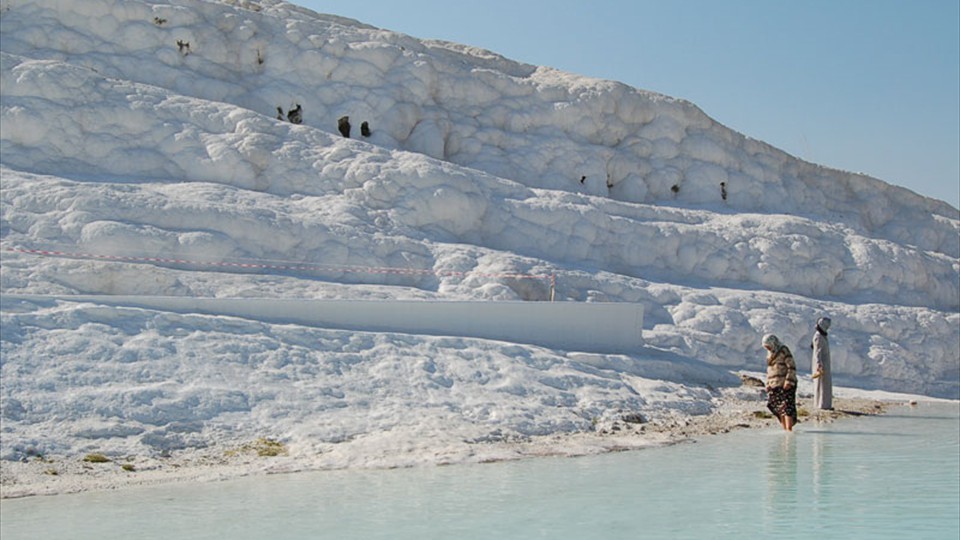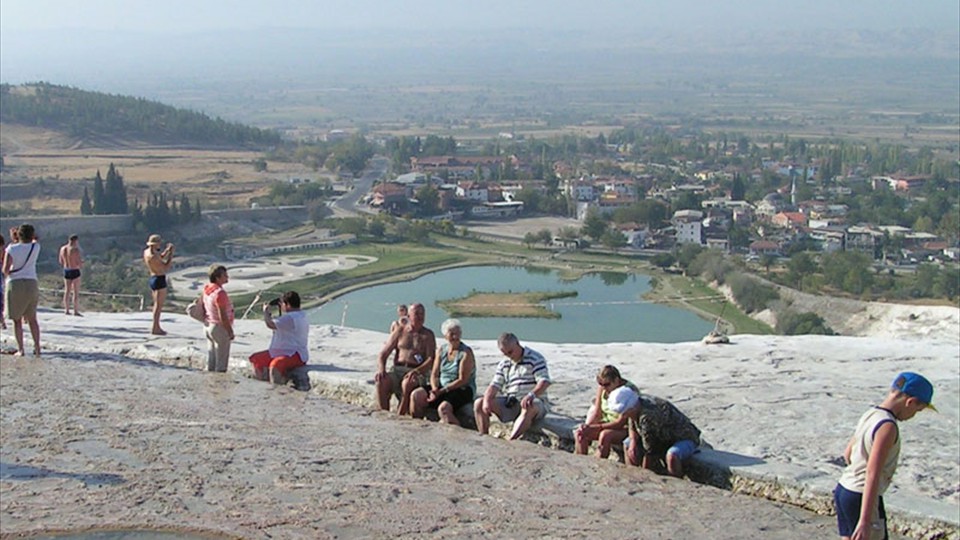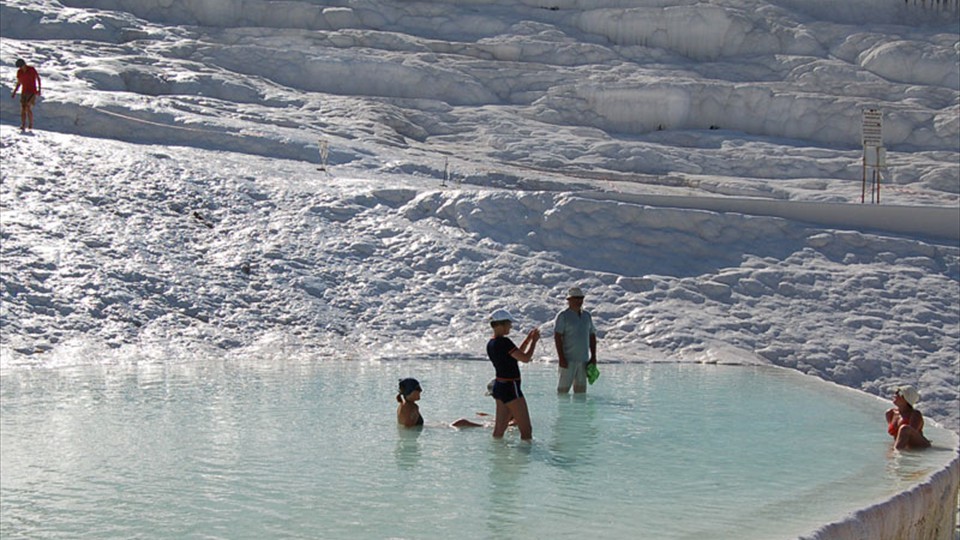Pamukkale

The stunning white calcium pools, which cling to the side of a ridge, have long been one of the most famous picture postcard views of Turkey: this is Pamukkale, literally meaning “cotton castle” .. known as 8th wonder of the World by Turkish people. It is a very popular destination for a short visit.
Somewhere deep in the earth beneath Pamukkale and the ancient Roman city of Hierapolis lies a vast source of water heated by volcanic lava. The water dissolves pure white calcium, becomes saturated with it, and carries it to the earth's surface, where it bursts forth and runs down a steep hillside. Cooling in the open air, the calcium precipitates from the water, adheres to the soil, and forms white calcium "cascades" frozen in stone called travertines. The water has been bursting forth at Hierapolis/Pamukkale for more than two millennia. The Romans built the spa city of Hierapolis so citizens could come and enjoy the health benefits of the hot mineral water: the beauty of the travertines was just a bonus!
Hotels were springing up from the 1970s to cater for the large influx of tourists, and shortly afterwards UNESCO declared Pamukkale a World Heritage Site. But by the 1990s, this level of tourism took its toll on the state of the calcium pools and restrictions were placed on these travertine terraces. Many hotels were knocked down, and today visitors are only allowed on major paths around the sites, and must remove footwear to stand on the calcium deposits. This seems to have been a successful move, as the water supply is now used for preservation and some of the damaged calcium deposits have been strengthened.
The travertines are accessed via a toll-booth - charging 80TL (as of 2020): this price includes admission to nearby Roman city of Hierapolis. However you will be required to remove your shoes in order to walk on them so they stay white as ever (so bring something to put your shoes in!). It can get quite hot in summer ... so a hat and especially sunglasses will certainly be very helpful against the sun and the reflected rays from the chalky cascades. On the other hand, the cold winter climate could make the experience slightly uncomfortable. Climbing up the cascades barefoot, with cold water running downstream will be a tough task. You can avoid the climb and take a taxi to the top of the hill and enter from the side of Hierapolis. But the real charm Pamukkale lies in experiencing these travertines for yourself.
If you are visiting independently - rather than on a 'packaged' tour from Turunç, day tours are offered including English-speaking guide, entrance fee to Hierapolis and the travertines and buffet lunch. Such tours leave from the Pamukkale bus company office on the main street opposite the travertines, and the Koray Hotel. There may be tours starting from other places around the town as well. For those who rather not visit the travertines under the scorching sun, there are also night tours as well, which start from small guesthouses.

Other than the travertines, places worth a look around Pamukkale are:
- The great (12,000-seat) Roman amphitheater of Hierapolis should not be missed. It is located on the top of the white terraces, is about 2700 meters long and 160m high and can be seen from the hills on the opposite side of the valley.
- Laodikya, just 10 km (10 minutes on a local dolmuş) from Pamukkale on the Denizli road is mentioned in the Bible as one of the seven Churches of the Revelations and even though it hasn't been reconstructed as much as the more famous sites like Ephesus, is a great place to experience the Roman history without the crowds.
- Karahayit, the red spring is also 5 minutes from Pamukkale, not nearly as big as the calcium outcrop, but worth a look or if you want to try their springs and mud bath located at the northern edge of the town
- Kaklik caves are like a small version of Pamukkale, but in a cave, underground and are about 30 minutes from Pamukkale.









 1
1 2
2 3
3 4
4 5
5 6
6 7
7 8
8 9
9